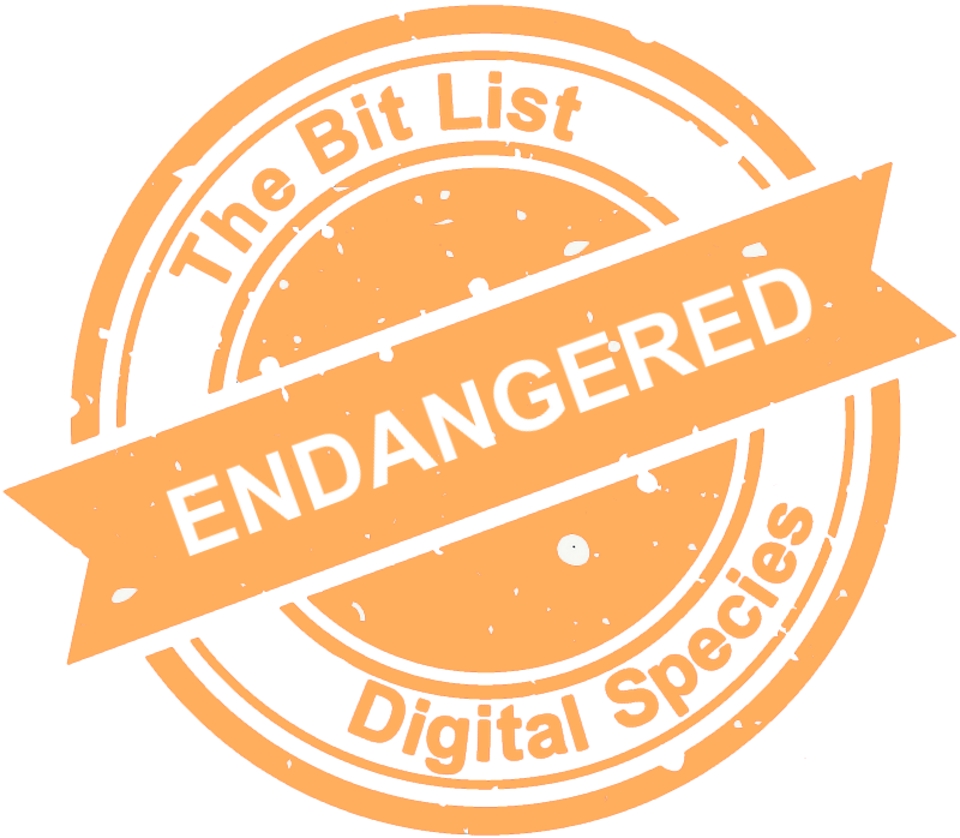DPC
iPRES: Contributing to the Digital Preservation Community
Chris Prom is Interim Associate Vice Chancellor for Research and Innovation at the University of Illinois at Urbana-Champaign
The University of Illinois at Urbana Champaign is proud to release the iPRES 2023 Proceedings on World Digital Preservation Day. We hope you find them profitable and useful for your work.
Doing so is a fitting capstone to the community effort that underpins digital preservation work so evident during the iPRES 2023 meeting, held from September 19 - 22, 2023. As conference co-chair, along with Tracy Seneca, I can truly say that organizing the conference was THE highlight of my professional career to date. The sense of welcome, collegiality, rigor, and fun that the entire conference planning team - our program committee, local organizers, peer reviewers, and supporters - brought to the table, was truly extraordinary and inspiring!
Announcement: Call for Contributions iPRES 2024
Added on 1 November 2023
 16-20 September 2024, iPRES comes to Ghent and Flanders. Hosted by Ghent University, Digital Archives Flanders, VRT and meemoo, Flemish Institute for Archives, we invite you to unlock the past, present and future of digital preservation together. We are pleased to announce the iPRES 2024 Call for Contributions!
16-20 September 2024, iPRES comes to Ghent and Flanders. Hosted by Ghent University, Digital Archives Flanders, VRT and meemoo, Flemish Institute for Archives, we invite you to unlock the past, present and future of digital preservation together. We are pleased to announce the iPRES 2024 Call for Contributions!
New Digital Asset Registers Project from The National Archives (UK) and the DPC
Added on 1 November 2023
The National Archives (UK) and the Digital Preservation Coalition (DPC) are delighted to announce today on World Digital Preservation Day that we will be working together on a new project to develop guidance for creating Digital Asset Registers.
Bit List 2023: If digital preservation is possible then data loss is a choice
William Kilbride is Executive Director of the Digital Preservation Coalition
Digits are born vulnerable.
Every single byte of data depends on a global infrastructure of technology, process and people for its meaning and purpose to be realized. Much data serves the moment: it is quickly forgotten in a continuous flow of process and interaction. Other data serve lengthier purposes, as evidence and outputs of transactions that have significant impacts and long duration, longer than the infrastructure and the institutions through which the data was created. Everything in the latter category falls into the scope of digital preservation—the series of managed activities necessary to ensure continued access to digital materials for as long as necessary, beyond the limits of media degradation, technical obsolescence, and organizational change.
The Bit List is not a paper exercise. It was originally conceived as a call to action based on the insight and authentic voice of the global digital preservation community, and it remains so.
Celebrating WDPD2023 at the Nelson Mandela Foundation
This video was sent to us by Zandile Myeka, Metadata and Photographs Archivist at the Nelson Mandela Foundation, in celebration of World Digital Preservation Day 2023.
The Commonwealth Bank of Australia Group Archives joins the Digital Preservation Coalition!
Added on 1 November 2023
The Digital Preservation Coalition (DPC) is delighted to announce today on World Digital Preservation Day that the Commonwealth Bank of Australia Group Archives has joined the Coalition as an Associate Member.
Based in Sydney, the CBA Group Archives houses information about the Commonwealth Bank and other financial institutions whose archives are curated by the Group Archives team. They are custodians of over 4 million legacy digital items dating back many decades that record and preserve the ongoing evolution of the Commonwealth Bank and Australia’s financial system.
Joining Efforts, a Sure Bet in Digital Preservation
Antonio Guillermo Martinez is the Founder and Head of Product at LIBNOVA.
Este blog está disponible en español a continuación:
One more year we join the Digital Preservation Coalition's initiative to celebrate the World Digital Preservation Day. This year the central theme to reflect on is "Digital Preservation: A Concerted Effort".
At LIBNOVA we firmly believe that a successful digital preservation project is the result of a joint effort between the institution and the provider, which is why we have always advocated a project approach based on cooperation, with the needs of our customers as the driving force for innovation and by engaging in collaborative research projects. But, what does this really mean?
Interpretive Materials
Interpretive Materials
 |
||
|
Text, graphics, videos, and other content that is used in gallery and exhibition spaces to guide audiences and provide learning experiences. |
||
|
Digital Species: Museum and Gallery, Social Media |
New Rescoped Entry |
Consensus Decision |
|
Imminence of Action Action is recommended within five years, detailed assessment within three years. |
Significance of Loss The loss of tools, data or services within this group would impact on many people and sectors. |
Effort to Preserve | Inevitability It would require a small effort to preserve materials in this group, requiring the application of proven tools and techniques. |
|
Examples These may include explanatory text and diagrams. This type of content typically sits alongside objects being exhibited. This information may also be used in other forms of digital public engagement, including within websites and social media. |
||
|
‘Critically Endangered’ in the Presence of Aggravating Conditions Poor or no documentation; lack of repository and preservation infrastructure; external dependencies; poor storage; significant volumes or diversity of data; digital content being left unmanaged with Exhibitions teams (e.g. not going through any Records Management, Recordkeeping, being passed to the archives, or having preservation even considered). |
||
|
‘Vulnerable’ in the Presence of Good Practice Strong documentation; preservation capability; good recordkeeping principles, practices, and management in place; strong repository and preservation technical infrastructure; well-developed migration pathways. |
||
|
2023 Review This entry was added in 2019 under ‘Digital Materials in Museums and Galleries’ and previously rescoped in 2021 to ‘Supporting Digital Materials for Museums and Galleries’. The 2023 Bit List Council superseded the entry, splitting it into six discrete entries as the scope of the single entry was too broad to provide the guidance needed. The recommendation to break this entry down was also made by the 2021 Jury, as the types of digital collections content in museums can be vast and offer particular risks in museum and gallery contexts. This entry was added to focus on risks tied to interpretive materials in museums and galleries. These materials may be tailored to various audience demographics and may take into account a variety of learning styles. These materials can also provide significant insight into how display and interpretation of objects has changed over time. While some interpretive materials may be text or still image based, others may be more technically complex as they may be time-based (e.g. video) or even a complex digital object in its own right. |
||
|
Additional Comments Interpretive outputs through websites may have reduced risk as web outputs if captured as part of national web archiving initiatives. |
||
First Nations Secret/Sacred Cultural Material
First Nations Secret/Sacred Cultural Material
 |
||
|
This entry refers broadly to digital secret and sacred cultural material and documentation of First Nations peoples’ heritage in all forms of media. This can include born-digital materials directly or indirectly produced as outputs of research, community projects, oral histories, private or personal recordings, and/or data in databases and online platforms which have not been sustained or future-proofed. |
||
|
Digital Species: Community Archives |
New Entry |
Consensus Decision |
|
Imminence of Action Action is recommended within twelve months, detailed assessment is a priority. |
Significance of Loss The loss of tools, data or services within this group would impact on people and sectors around the world. |
Effort to Preserve | Inevitability Loss seems likely: by the time tools or techniques have been developed the material will likely have been lost. |
|
Examples Examples are wide ranging but can generally include: Born-digital material produced as an output of funded research, produced as an indirect output of community projects (e.g. funded projects to provide technology, devices and training to First Nation community members to record content); Video or oral histories depicting secret/sacred stories, traditional ceremonies, dances or sacred sites; Private, personal video or oral history recordings on personal devices; Data and content in databases and online platforms. |
||
|
‘Critically Endangered’ in the Presence of Aggravating Conditions Lack of understanding within collecting institutions about cultural restrictions and complex levels of access permissions; Distrust of "official" archives due to lack of culturally appropriate handling of restricted/sensitive material; Lack of technical infrastructure within the (remote/rural) community to preserve the content; Low internet accessibility to rural/remote regions or disadvantaged cohorts (the digital divide); Non-ideal environmental conditions for storing digital carriers (e.g. SD card, digital video device storage, mobile phone). |
||
|
‘Vulnerable’ in the Presence of Good Practice Improved internet accessibility (especially in rural/remote regions to enable cloud storage); Funding to improve technical infrastructures within communities (e.g. government or national funding); Funded programs to improve digital literacy within communities (e.g. government or national funding); Well-developed and considered outreach and awareness-raising efforts/collaborations to increase education to community members about the risks of losing digital content and possible digital preservation solutions; Education and uptake amongst archives and collecting institutions in culturally appropriate approaches for handling and preservation of secret/sacred digital material; Positive reciprocal collaboration and relationships between local First Nation community Knowledge Centres, collecting and research institutions, and Government infrastructures to empower First Nations People in the decision-making in preservation, archiving, description and determination of appropriate accessibility to the content. |
||
|
2023 Review This is a new Bit List entry added in 2023 to provide greater awareness and specificity in approaching the digital preservation of secret/sacred, sensitive and private materials. While this entry can be considered very wide-ranging, covering different kinds of digital materials, it was added to draw attention to risks and issues not fully addressed by existing entries–those relating to the significance of material created and support for preservation within and in the context of the communities. While the 2023 Council all agreed on the importance of including this entry, there was also much discussion about the need for further rescoping and presentation of the entry in a considered and appropriate way. For example, differentiating between First Nations cultural material (which can include sacred/secret material) and secret/sacred or other culturally restricted materials more broadly. The discussion touched on the challenges to assign one overall risk classification, significance and impact within the existing structure of the Bit List, and also on providing recommendations for practice in and outside of organizational contexts (taking into account creation, ownership, intervention, misappropriation, legal and ethical considerations that need to be taken when considering these cultural materials). |
||
|
Additional Comments The 2023 Council additionally recognizes that further scoping and input are needed for this entry and recommend that the next major review for the Bit List revisit and restructure the entry, in particular looking at scoping the role and importance of creators and communities. It is needing further work to tease out the issues for rural and remote as well as sacred /secret and community archives. Input and guidance from First Nations contributors is necessary. Consultation with the relevant community knowledge holder or representative is the first consideration when dealing with traditional knowledge issues. The content and creator are both important to assessing risks and approaches. The secret/sacred nature of the content may deem the material to be restricted to be accessed only by appropriate First Nation community members. However, in the long term, it also has an impact on the relevant nation's history and heritage. In any case, custodians should take into account permissions and authorization. There will be similarities and differences between First Nation communities and within individual continents. There is an education piece for cultural institutions. When secret/sacred material comes in we are having to rethink workforces as an archive in how to take in and process and how to make it as safe as possible for viewing and being respectful of the content (e.g., male and female content stored separately, etc.) Time constraints are unknown, and required actions have a lot to do with government funding It may be better to score and structure this entry into two, with one for materials from marginalized and/or threatened communities, and another for sacred and/or other culturally restricted materials. Both of these are resistant to centralized and saviourism/colonialism approaches and benefit from community empowerment. If considering a widening of scope to other culturally restricted materials more broadly, this should also contain any material that is dangerous for the individual to hold, such as LGBTQ+ materials in countries where it is illegal. Case Studies or Examples:
See also:
|
||
Custom Online Databases
Custom Online Databases
 |
||
|
Data collected, presented and disseminated in custom online databases that is not stored elsewhere, particularly data at risk when it is locked in the database because no export or harvest options are available. |
||
|
Digital Species: Databases, Research Outputs, Web |
New Entry |
Consensus Decision |
|
Imminence of Action Action is recommended within three years, detailed assessment within one year |
Significance of Loss The loss of tools, data or services within this group would impact on different people and sectors. |
Effort to Preserve | Inevitability It would require a small effort to preserve materials in this group, requiring the application of proven tools and techniques. |
|
Examples Custom databases created project websites for research, citizen science. |
||
|
‘Critically Endangered’ in the Presence of Aggravating Conditions Lack of open licences; lack of export options; lack of system maintenance; expired domain; lack of export functionality; lack of technical knowledge and skills; limited or dysfunctional data management planning; web capture challenges that means unlikely to be picked up by automatic crawlers. |
||
|
‘Vulnerable’ in the Presence of Good Practice Backup and documentation; preservation capability in designated repository; use of open formats and open source licencing that enables preservation; enabled export options; robust data management planning; documented and managed professionally. |
||
|
2023 Review This is a new Bit List entry nominated and approved by the 2023 Council to draw attention to the particular challenges of preservation for custom online databases. The entry focuses on the distinct risks relating to the online databases which cannot go through traditional web archiving tools. While there are challenges to preserving databases both off- and online, this entry was nominated in context of projects which set up a custom online database to record, present, and disseminate collected data, but this data is not stored elsewhere (e.g. in a long-term digital archive) and often is locked in the database because no export or harvest options are available. The risks for these online databases include: Maintenance of the system after the end of a project is not ensured, and online databases disappear because of security issues or because the domain expires; Not all data is open and after the end of a project no one is responsible for granting access; The data is not stored elsewhere (e.g. in some trusted repository); The data is locked in: It cannot be exported in (e.g. CSV) for further re-use. Additionally, the nomination of the entry also highlighted a gap in the Bit List for databases more broadly. The Council agreed a new higher-level Databases digital species group should be created to address this gap, inviting nominations for other database-related entries to be considered for the next major revision of the Bit List. |
||
|
Additional Comments The preservation of this entry is highly dependent on the software used but, no matter what, once the project has reached its end, it starts to become vulnerable. Often, the online databases are of interest to a sub-discipline-specific group of people, e.g. archaeologists specialized on cuneiform tablets. But the material itself often is then invaluable for this group because of the great effort invested in compiling it. Databases for citizen science also provide an example where the upload of information directly into it makes it distinctive. Emulation can be used to preserve these databases. For example, Yale University is preserving databases, especially SQL databases for websites, using EAASI. There are technical challenges, but the databases can be preserved, and have found issues are often around access to data and workforce development of technical skills to undertake preservation actions. There is a risk, however, that some of the databases cannot be exposed to the web as they have no survival time and/or cannot make them available as they were intended to be used See also:
|
||
































































































































